|
John Tyman's Cultures in Context Series NEPAL |
|
|
|
686 - 723 |
|
John Tyman's Cultures in Context Series NEPAL |
|
|
|
686 - 723 |
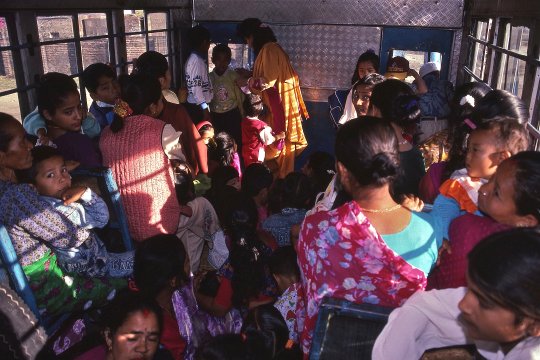 |
| 691. We travelled there with a “picnic party” from a local women’s group, in the back of a truck fitted out as a bus. Others arrived in open carts. [Video Extract 30] |
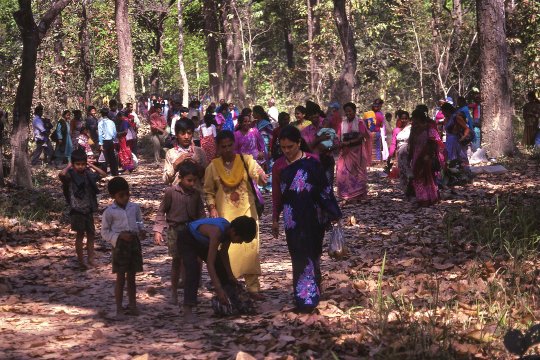 |
| 693. Disembarking on the other side of the river, we walked through the forest to the site of the celebrations. |
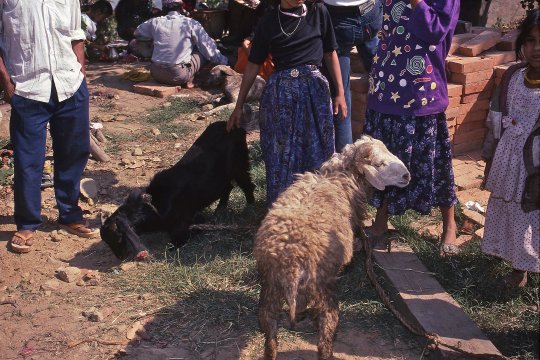 |
| 695. In anticipation of the picnic feast to follow many people sacrificed sheep or goats. |
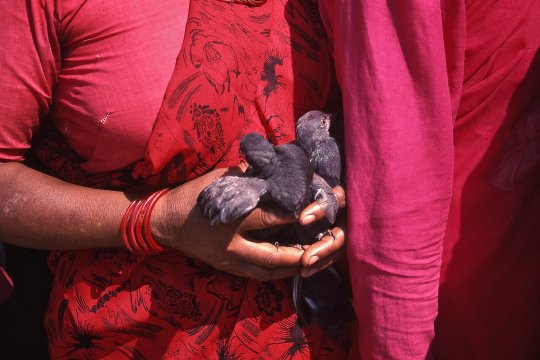 |
| 696. Those who could not afford a large animal brought pigeons. Their blood would be sprinkled at the same posts. |
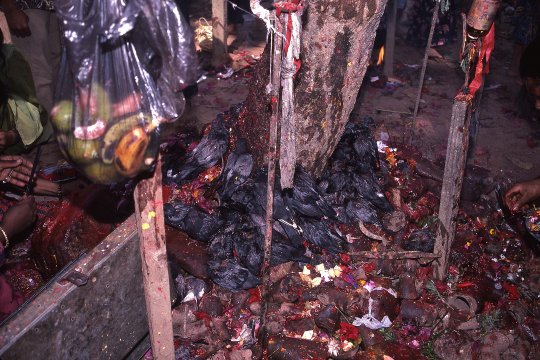 |
| 697. Other offerings were made beside the holy tree where Bikram Baba’s image had been found 10 years before. |
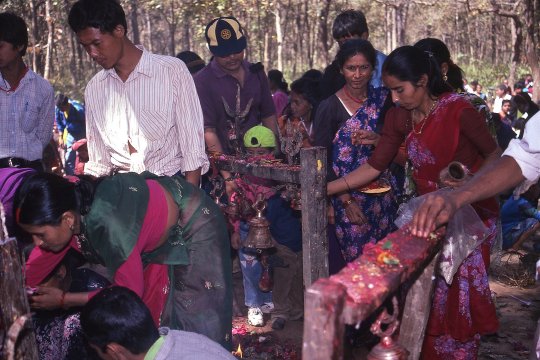 |
| 698. There was a shrine close-by at which people made offerings, rang bells and prayed. |
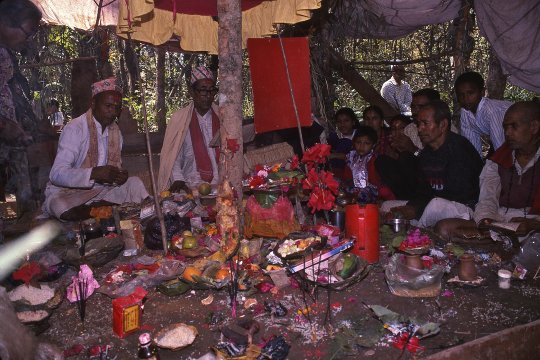 |
| 699. And there was another area supervised by local priests. |
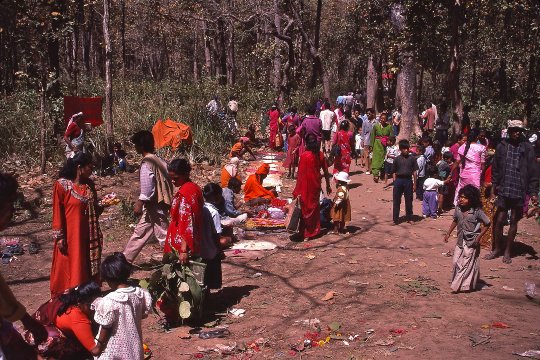 |
| 700. The forest then was a hive of activity. Beneath the trees there were stallholders selling objects used in the preparation of puja dishes. [Video Extract 30] |
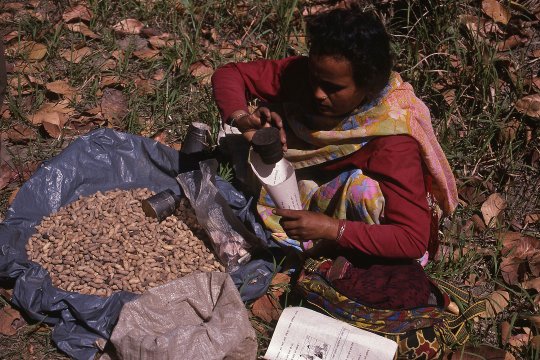 |
| 701. There were women selling peanut snacks, and also beggars seeking alms. |
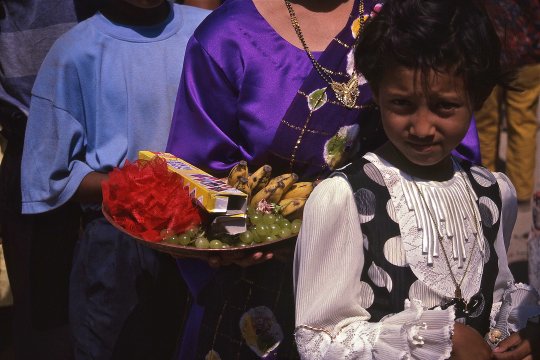 |
| 702. Much time, prayer and effort was given to the preparation of puja dishes, by men as well as women. |
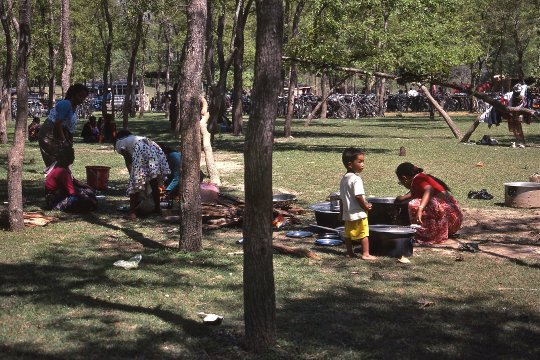 |
| 704. It was clear then that we were the lucky ones, as many people had obviously travelled all the way here not by bus, or even ox-cart, but on bicycles. |
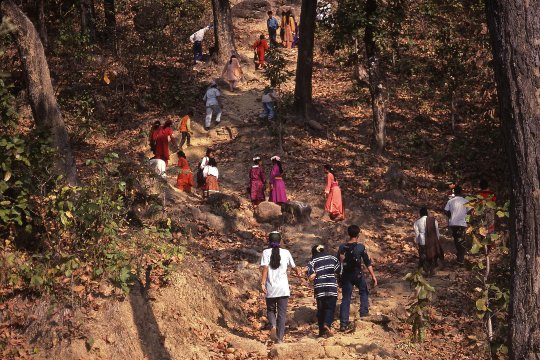 |
| 705. Days later, during the same festival, we visited the Kalika (Kali) Mandir (temple), near Bharatpur, joining pilgrims climbing the slopes of a steep hill. |
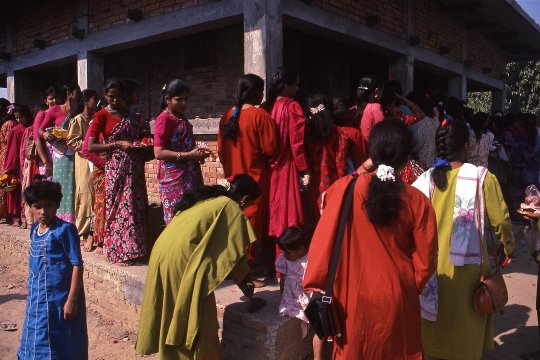 |
| 707. The building was clearly of recent date, and built of concrete and bricks, but it was a holy place nonetheless and attracted large crowds during festivals. |
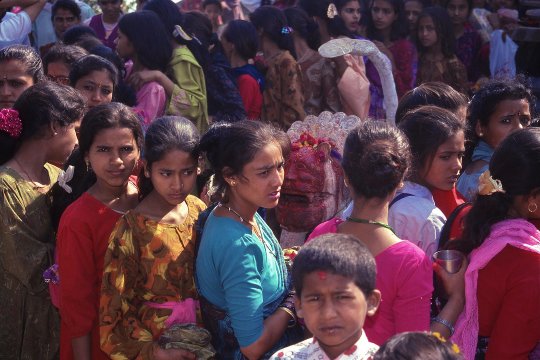 |
| 709. They then lined up outside the temple and waited their turn to enter, at least most of them did. |
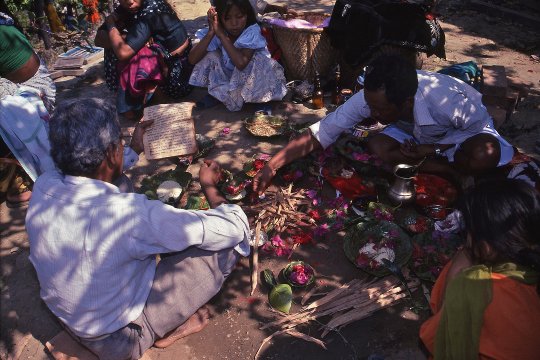 |
| 710. Some Brahman families brought their own priests and worshipped separately. This family brought five animals to sacrifice. |
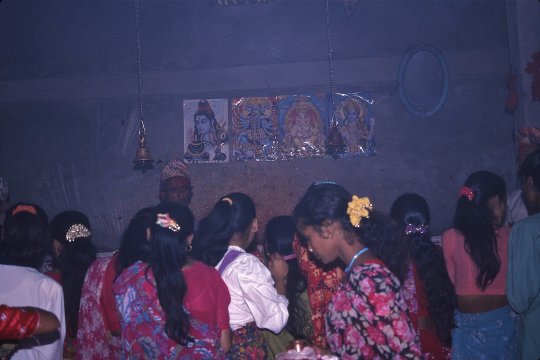 |
| 711. Inside the temple devotees keep their hands together (as in prayer), moving clockwise, and offer intercessions and salutations to the presiding deity. |
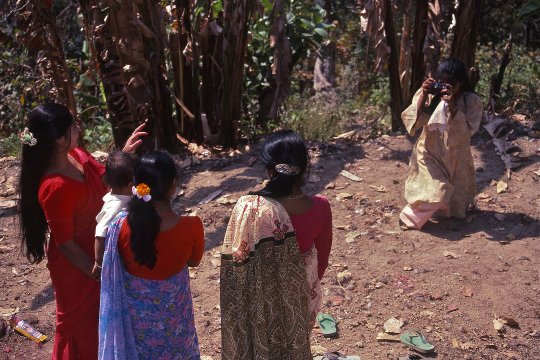 |
| 716. There may be time then for family photos -- sometimes, but not always, beside the corpse of the animal on which they will feast later. |
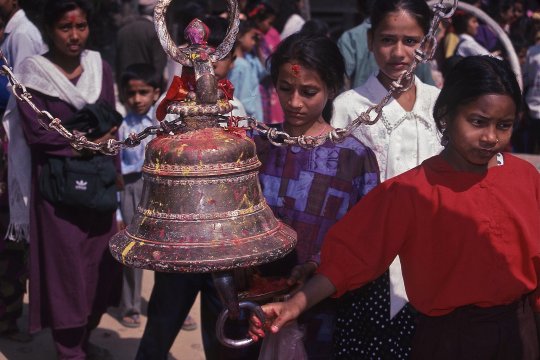 |
| 717. As they leave, everyone will anoint the temple bell with vermillion and ring it, signifying the completion of their worship. |
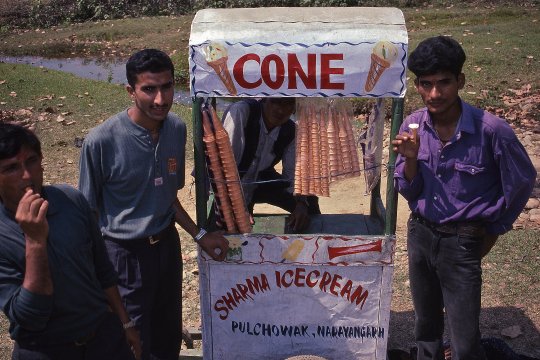 |
| 718. And on their way down the hill the lucky ones are treated to ice creams, -- in this case supplied by a Brahman (according to the name “Sharma”). |
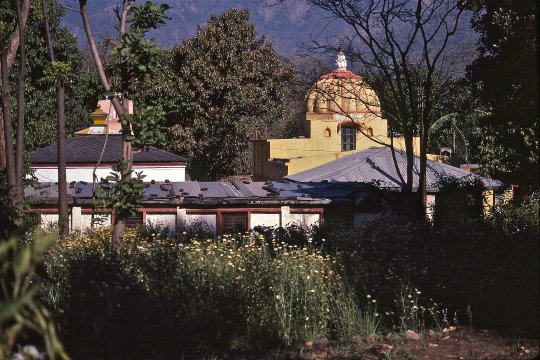 |
| 720. It is home to many temples, some ancient, others new. |
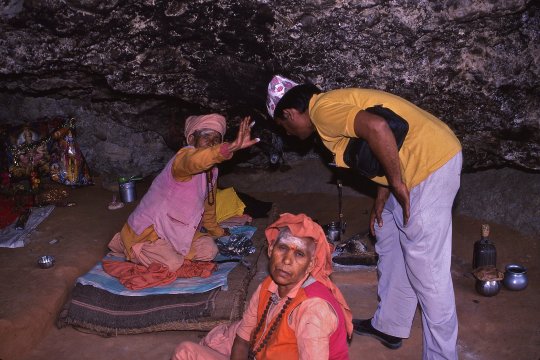 |
| 721. It has a number of scared caves also, and is home to many sadhus. |
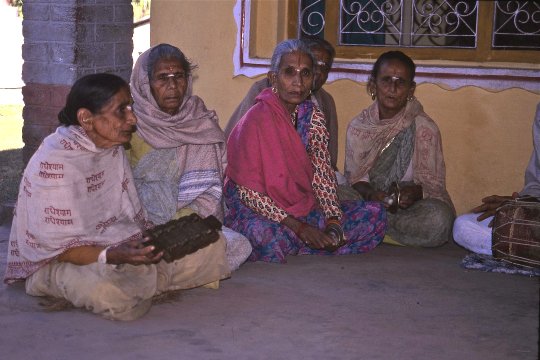 |
| 722. It is also the site of a refuge for widows waiting to die. A wealthy sadhu sold her house and land and used the money to finance the building of two more temples and a refuge for women. |
![]()
Text, photos and recordings
by John Tyman
Intended for Educational Use
Only.
Contact Dr. John Tyman at johntyman2@gmail.com
for more information regarding
licensing.
![]()
www.hillmanweb.com
Photo processing, Web page layout,
formatting and hosting by
William
Hillman ~ Brandon, Manitoba ~ Canada